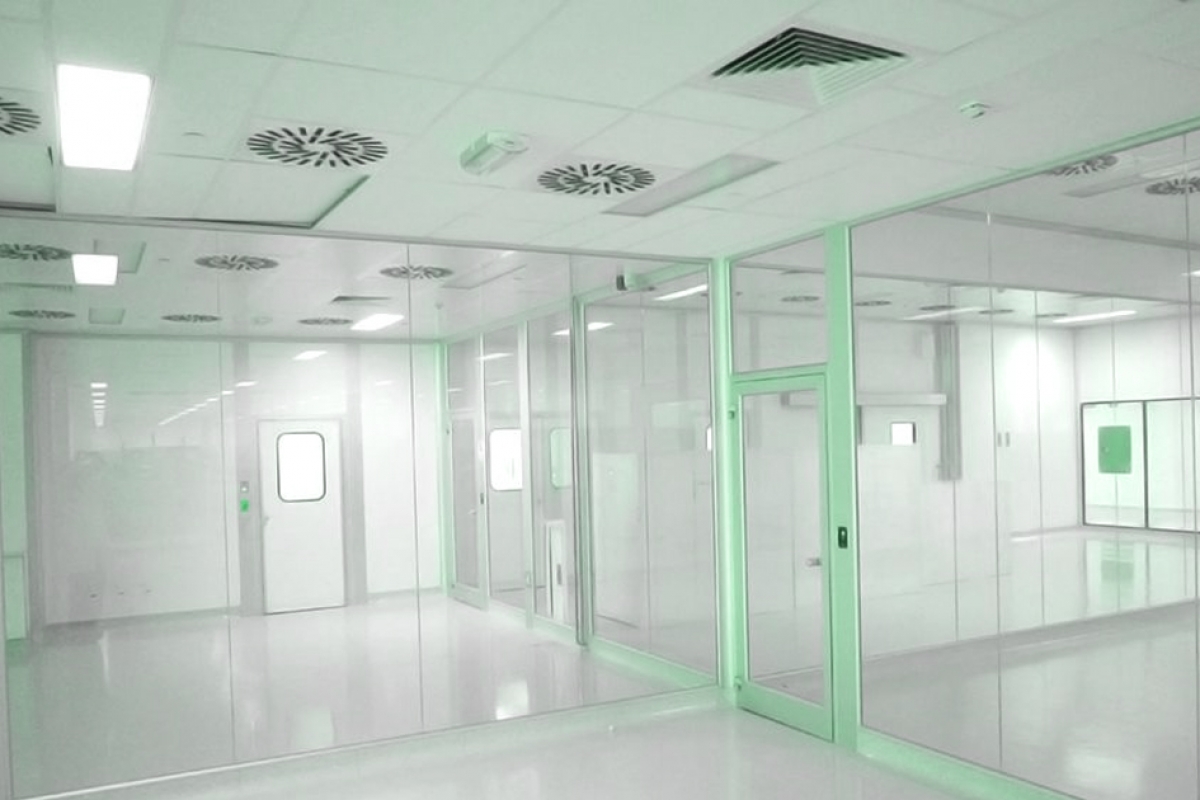
Cleanroom Windows Cleaning
Windows are among the most essential parts of a well-maintained cleanroom. Here are tips for cleaning windows in your cleanroom.
Windows and other glass surfaces within the cleanroom should not be overlooked when developing a cleanroom maintenance routine. Window can be large or small, and their purpose can vary from monitoring and observation to an architectural feature of the building. They also happen to be one of the tougher surfaces to keep clean. If the cleanroom’s windows are cloudy with residue or smudged, it’s easy to tell!
Selecting the proper cleanroom equipment can not only make the process easier, it can also help prevent harmful contamination.
Next, we’ll take a look at one method for cleaning windows within the cleanroom.
Surface Prep: Detergents Vs. Disinfectants
A detergent is needed to first remove all the dirt and soil from the surface. The detergent is going to act as an agent to break up anything that is stuck on the ledges and window surface.
The disinfectant agent is going to actually kill the microorganisms on the surfaces afterward.
Depending on the cleanroom and its specific uses, the cleanroom manager will have to consider what type of agents are needed.
Detergent Do’s & Don’ts
Some key factors to keep in mind with a detergent is that it should be non-foaming. It must be a neutral and non-ionic solution and compatible with the disinfectant. Otherwise, the detergent’s residue could counteract the disinfectant’s effect.
Disinfectant Do’s & Don’ts
There are many requirements when choosing a disinfectant for a clean room.
First, make sure the disinfectant meets regulations and guidelines specific to your cleanroom. This includes how it is used. Two different disinfectants in the rotation are required in order to meet GMP regulations.
Good disinfectants have rapid action, which means they kill bacteria quickly. They should also have a wide spectrum of activity. This refers to the range of bacteria that it is able to eliminate.
Wiping Technique
No matter the method used, there are several best practices to consider when cleaning window surfaces.
- Start from the top and work down using a parallel wiping motion
- Do not use a circular motions
- Use a parallel wiping motion back and forth – starting on one side and finishing at the opposite end
Before moving forward, wait for the detergent to dry completely. Then apply the disinfectant solution in the same manner. The surface must remain wet for the right amount of contact time.
Other Considerations
Your cleanroom’s class will ultimately determine the type of material to be used for wiping down the surface. It also determines the frequency of wiping down surfaces. Refer to your cleanroom manual for more information.
Contact us for more information on recommended products for cleaning windows within the cleanroom.
Resources & Articles
CLIN ® "Resources" page is for individuals/companies seeking information on cleanrooms and controlled environments. Find Cleanroom News, Discussion Forums, Cleanroom Cleaning Recommendations, Cleanroom Terminology, Cleanroom Directory, and more.
Content Disclaimer
Information are contributed by/from different websites and all credit goes to its respective owners/writers/websites/companies and etc, and while we endeavour to keep the information up to date and correct, we make no representations or warranties of any kind, express or implied, about the completeness, accuracy, reliability, suitability or availability with respect to the website or the information, products, services, or related graphics contained on the website for any purpose. Any reliance you place on such information is therefore strictly at your own risk.
In no event will we be liable for any loss or damage including without limitation, indirect or consequential loss or damage, or any loss or damage whatsoever arising from loss of data or profits arising out of, or in connection with, the use of this website.
Through this website you are able to link to other websites which are not under the control of respective owners/writers/websites/companies and etc. We have no control over the nature, content and availability of those sites. The inclusion of any links does not necessarily imply a recommendation or endorse the views expressed within them.
Every effort is made to keep the website up and running smoothly. However, CLIN ® takes no responsibility for, and will not be liable for, the website being temporarily unavailable due to technical issues beyond our control.











